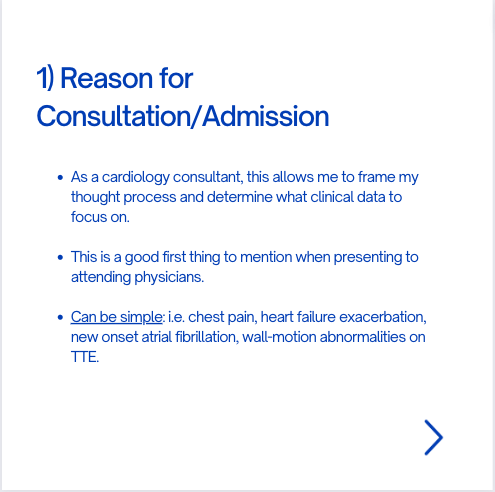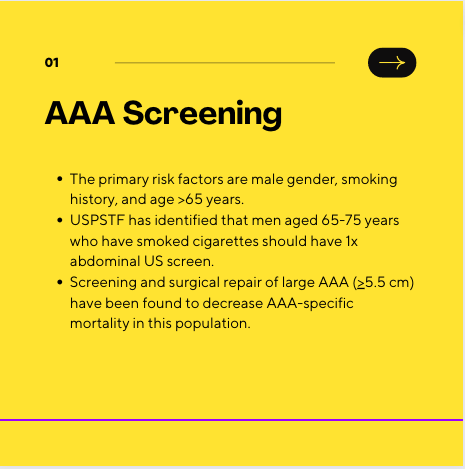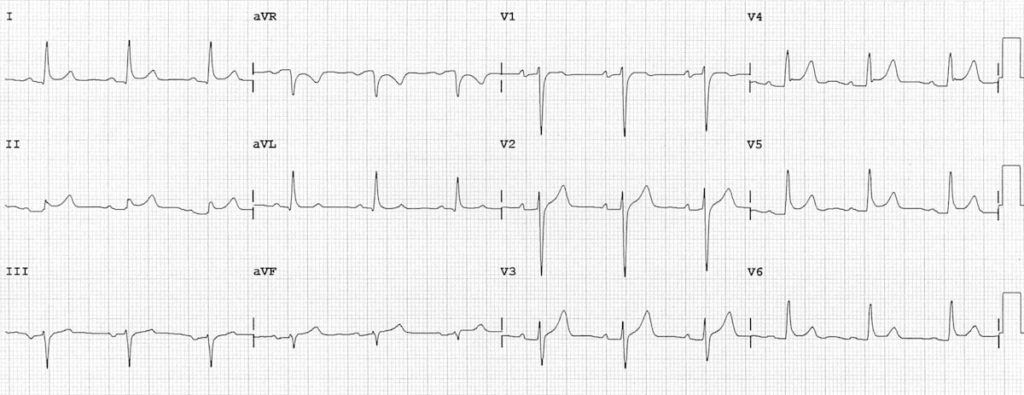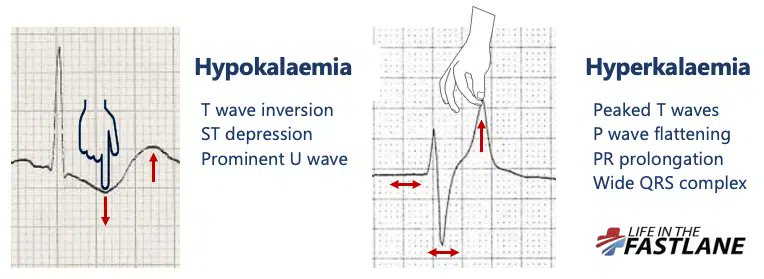Discover and read the best of Twitter Threads about #IMG
Most recents (24)
As an intern, chart checking new patients was intimidating and time-consuming.
Even as a cardiology fellow, I continue to refine my system.
Here are 7 tips and tricks to help you out!
#arjuncardiology #MedTwitter #MedEd #Cardiotwitter #IMG
Even as a cardiology fellow, I continue to refine my system.
Here are 7 tips and tricks to help you out!
#arjuncardiology #MedTwitter #MedEd #Cardiotwitter #IMG

Studying for the IM Boards and Step 2 CK can be challenging.
Here are some of my notes that can help you.
Part #24: Ophthalmology : 5 High-yield facts!
#arjuncardiology #medtwitter #MedEd #IMG
Here are some of my notes that can help you.
Part #24: Ophthalmology : 5 High-yield facts!
#arjuncardiology #medtwitter #MedEd #IMG

During my Internal Medicine training, I wrote 100s of History and Physicals (H&Ps).
Now as a Cardiology fellow, I read every single H&P for a new consult.
Here are 7 tips and tricks for effective H&Ps. #arjuncardiology #MedTwitter #MedEd #Cardiotwitter #IMG
Now as a Cardiology fellow, I read every single H&P for a new consult.
Here are 7 tips and tricks for effective H&Ps. #arjuncardiology #MedTwitter #MedEd #Cardiotwitter #IMG

Studying for medical exams can be challenging.
Here are some of my notes I used to study for the IM Boards. Also high-yield for Step 2 CK!
Part #23: Dermatology: 5 High-yield facts! #arjuncardiology #medtwitter #MedEd #IMG
Here are some of my notes I used to study for the IM Boards. Also high-yield for Step 2 CK!
Part #23: Dermatology: 5 High-yield facts! #arjuncardiology #medtwitter #MedEd #IMG

Studying for medical exams can be challenging.
Here are some of my notes I used to study for the IM Boards. Also high-yield for Step 2 CK!
Part #22: Dermatology: 5 High-yield facts! #arjuncardiology #medtwitter #MedEd #IMG
Here are some of my notes I used to study for the IM Boards. Also high-yield for Step 2 CK!
Part #22: Dermatology: 5 High-yield facts! #arjuncardiology #medtwitter #MedEd #IMG

If you are going to your first ICU rotation and you feel like you have no idea what to do:
I felt the same😄
I added a thread 🧵 with 8 tips for med students and new interns of #MedTwitter #IMG #ICU
Pls add your questions or tips in comments!
⤵️⤵️
I felt the same😄
I added a thread 🧵 with 8 tips for med students and new interns of #MedTwitter #IMG #ICU
Pls add your questions or tips in comments!
⤵️⤵️
1️⃣ Ventilator skills are game changers! Review some basics before starting.
2️⃣Great resources for studying:
🔸️@OnePagerICU summaries of most important icu pearls in one page🥹
🔸️@MedCramVideos great videos 😎
🔸️Rebel EM
🔸️EMCrit project
🔸️Marino's ICU book🤠
2️⃣Great resources for studying:
🔸️@OnePagerICU summaries of most important icu pearls in one page🥹
🔸️@MedCramVideos great videos 😎
🔸️Rebel EM
🔸️EMCrit project
🔸️Marino's ICU book🤠

3️⃣Things to check for every ICU patient when pre-rounding:
🔸️Which drips/current rate
🔸️The RASS score
🔸️Ventilator settings (tidal vol., RR, FIO2, PEEP, mode)
🔸️Sedation and analgesics
🔸️intake/output
🔸️Access lines and if they need to be removed
🔸️Blood gas
🔸️Which drips/current rate
🔸️The RASS score
🔸️Ventilator settings (tidal vol., RR, FIO2, PEEP, mode)
🔸️Sedation and analgesics
🔸️intake/output
🔸️Access lines and if they need to be removed
🔸️Blood gas
Drug of choice for ANAPHYLAXIS in a patient with no response to Epinephrine?
Patient is on Propranolol 60 mg BD for essential tremors.
#MedTwitter #emergencymedicine #CriticalCare
Patient is on Propranolol 60 mg BD for essential tremors.
#MedTwitter #emergencymedicine #CriticalCare
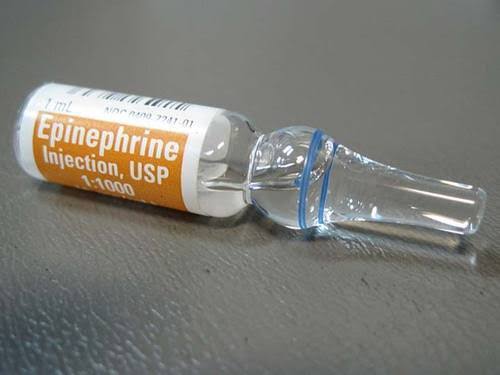
Which drug should be given?
#MedTwitter #MedEd #MedicalStudentTwitter #IMGs #IMG #medicaleducation #medicalinternship #medicineresidency #internalmedicine #doctors #madaktari #Medicos #medicina #médecins #Medizin #Likitoci #medicine #medical #FOAMed #FOAMim #FOAM4GP
#MedTwitter #MedEd #MedicalStudentTwitter #IMGs #IMG #medicaleducation #medicalinternship #medicineresidency #internalmedicine #doctors #madaktari #Medicos #medicina #médecins #Medizin #Likitoci #medicine #medical #FOAMed #FOAMim #FOAM4GP
Anaphylaxis is a severe, life threatening systemic hypersensitivity reaction characterized by being rapid in onset with potentially life threatening airway, breathing, or circulatory problems and is usually, although not always, associated with skin and mucosal changes.( ICD-11)
27 yrs old patient, detected to be pregnant when she missed her periods one day back. She has Graves disease on Rx for past 3 years, presently on Carbimazole 5mg daily and not on propranolol. She was euthyroid with Rx for past 1 year. Best strategy ?
Present reports 👇
Present reports 👇

A. Stop carbimazole and monitor by weekly/fortnightly TSH, FT4 levels and follow up.
B. Switch to PTU 50mg bd and do FT4, TSH after 2 weeks and review
C. Switch to PTU 50 mg bd + LT4 50mcg OD. TSH, FT4- 4wkly
D. PTU 50mg BD and Propranolol XL 20mg , Monthly TSH,FT4-followup
B. Switch to PTU 50mg bd and do FT4, TSH after 2 weeks and review
C. Switch to PTU 50 mg bd + LT4 50mcg OD. TSH, FT4- 4wkly
D. PTU 50mg BD and Propranolol XL 20mg , Monthly TSH,FT4-followup
In order to become a sub-specialist, it is important to first be a good internist!
Here are some of my notes I used to study for the Internal Medicine Boards.
Part #1: 7 High-yield facts!
#arjuncardiology #medtwitter #MedEd #IMG
Here are some of my notes I used to study for the Internal Medicine Boards.
Part #1: 7 High-yield facts!
#arjuncardiology #medtwitter #MedEd #IMG

One of the most important diagnostic tests in Cardiology to interpret is the EKG. Here are my thoughts and notes. Let me know what you think!
Thread #19: Pericarditis
#arjuncardiology #medtwitter #CardioTwitter #MedEd #IMG
Thread #19: Pericarditis
#arjuncardiology #medtwitter #CardioTwitter #MedEd #IMG
One of the most important diagnostic tests in Cardiology to interpret is the EKG. Here are my thoughts and notes.
Let me know what you think!
Thread #18: Electrolyte Abnormalities #arjuncardiology #medtwitter #CardioTwitter #MedEd #IMG
Let me know what you think!
Thread #18: Electrolyte Abnormalities #arjuncardiology #medtwitter #CardioTwitter #MedEd #IMG
One of the most important diagnostic tests in Cardiology to interpret is the EKG.
Here are my thoughts and notes. Will continue to this thread. Let me know what you think!
Thread #13: Inferior, Posterior, RV Infarction
#arjuncardiology #medtwitter #CardioTwitter #MedEd #IMG
Here are my thoughts and notes. Will continue to this thread. Let me know what you think!
Thread #13: Inferior, Posterior, RV Infarction
#arjuncardiology #medtwitter #CardioTwitter #MedEd #IMG
One of the most important diagnostic tests in Cardiology to interpret is the EKG.
Here are my thoughts and notes. Will continue to this thread. Let me know what you think!
Thread #12: Q-waves
#arjuncardiology #medtwitter #CardioTwitter #MedEd #IMG
Here are my thoughts and notes. Will continue to this thread. Let me know what you think!
Thread #12: Q-waves
#arjuncardiology #medtwitter #CardioTwitter #MedEd #IMG
One of the most important diagnostic tests in Cardiology to interpret is the EKG.
Here are my thoughts and notes. Will continue to this thread. Let me know what you think!
Thread #11: Myocardial Ischemia
#arjuncardiology #medtwitter #CardioTwitter #MedEd #IMG
Here are my thoughts and notes. Will continue to this thread. Let me know what you think!
Thread #11: Myocardial Ischemia
#arjuncardiology #medtwitter #CardioTwitter #MedEd #IMG
Heartiest Congratulations on #Match2023 #MatchDay2023 #MatchDay
Take a moment to cherish the fruits of your hard work and perseverance! Let's not lose hope if you did not match #IMGs #AMGs! Failure is an opportunity to learn, a process to achieve your dream! @TheNRMP @ECFMG_IMG
Take a moment to cherish the fruits of your hard work and perseverance! Let's not lose hope if you did not match #IMGs #AMGs! Failure is an opportunity to learn, a process to achieve your dream! @TheNRMP @ECFMG_IMG

The application pool is strong! So, Do Not Give up! Let's celebrate success and learning! Cheers! Know that the universe wants you to do well! A loving family, friends, well-wishers, teachers, mentors want you to succeed! 

We are here! @SarjuGanatraMD and I are happy to help you all! To those getting into #residency #fellowship and those gearing up to apply, interview, and get your 'MAD' dream true, we are here for you to be a part of your journey, passionately, for your dream! 

One of the most important diagnostic tests in Cardiology to interpret is the EKG.
Here are my thoughts and notes. Will continue to this thread. Let me know what you think!
Thread #10: Fascicular Blocks
#arjuncardiology #medtwitter #CardioTwitter #MedEd #IMG
Here are my thoughts and notes. Will continue to this thread. Let me know what you think!
Thread #10: Fascicular Blocks
#arjuncardiology #medtwitter #CardioTwitter #MedEd #IMG
Fascicular Blocks:
- Left bundle branch system: sub-divided into an anterior & posterior fascicle.
- Hemi-block does not widen the QRS complex markedly (compared to a RBBB or LBBB)
- Left bundle branch system: sub-divided into an anterior & posterior fascicle.
- Hemi-block does not widen the QRS complex markedly (compared to a RBBB or LBBB)
One of the most important diagnostic tests in Cardiology to interpret is the EKG.
Here are my thoughts and notes. Will continue to this thread. Let me know what you think!
Thread #9: Left Bundle Branch Block (LBBB)
#arjuncardiology #medtwitter #CardioTwitter #MedEd #IMG
Here are my thoughts and notes. Will continue to this thread. Let me know what you think!
Thread #9: Left Bundle Branch Block (LBBB)
#arjuncardiology #medtwitter #CardioTwitter #MedEd #IMG
One of the most important diagnostic tests in Cardiology to interpret is the EKG.
Here are my thoughts and notes. Will continue to this thread. Let me know what you think!
Thread #8: Right Bundle Branch Block (RBBB)
#arjuncardiology #medtwitter #CardioTwitter #MedEd #IMG
Here are my thoughts and notes. Will continue to this thread. Let me know what you think!
Thread #8: Right Bundle Branch Block (RBBB)
#arjuncardiology #medtwitter #CardioTwitter #MedEd #IMG
#DirectAN #faussecouche @MaudPetit_AN94 "Le MoDem a toujours souhaité une politique familiale ambitieuse. Le deuil périnatal, brutal, tragique doit absolument en faire partie."
#DirectAN #faussecouche @MaudPetit_AN94 "Notre groupe souhaitait que cet accompagnement soit élargi à l'interruption médicale de grossesse. Le cas de l'IMG qui concerne environ 7 000 grossesses par an nous semble avoir toute sa place dans ce débat." #img
#DirectAN #faussecouche @ArthurDelaporte "Parce que notre société a malheureusement intégré que les femmes doivent être silencieuses tout le temps même lorsqu'elle souffre, c'est aussi notre responsabilité de renverser ce dogme." 

One of the most important diagnostic tests in Cardiology to interpret is the EKG.
Here are my thoughts and notes. Will continue to this thread. Let me know what you think!
Thread #7: Ventricular Hypertrophy
#arjuncardiology #medtwitter #CardioTwitter #MedEd #IMG
Here are my thoughts and notes. Will continue to this thread. Let me know what you think!
Thread #7: Ventricular Hypertrophy
#arjuncardiology #medtwitter #CardioTwitter #MedEd #IMG
Atrial and Ventricular Enlargement:
- Both dilation & hypertrophy usually result in chronic pressure and volume overload on the heart muscle
- Pathological hypertrophy & dilation are often accompanied by fibrosis (scarring); can lead to arrhythmias and heart failure.
- Both dilation & hypertrophy usually result in chronic pressure and volume overload on the heart muscle
- Pathological hypertrophy & dilation are often accompanied by fibrosis (scarring); can lead to arrhythmias and heart failure.
One of the most important diagnostic tests in Cardiology to interpret is the EKG.
Here are my thoughts and notes. Will continue to this thread. Let me know what you think!
Thread #6: Atrial Abnormality
#arjuncardiology #medtwitter #CardioTwitter #MedEd #IMG
Here are my thoughts and notes. Will continue to this thread. Let me know what you think!
Thread #6: Atrial Abnormality
#arjuncardiology #medtwitter #CardioTwitter #MedEd #IMG
Atrial and Ventricular Enlargement:
- Both dilation & hypertrophy usually result in chronic pressure and volume overload on the heart muscle
- Pathological hypertrophy & dilation are often accompanied by fibrosis (scarring); can lead to arrhythmias and heart failure.
- Both dilation & hypertrophy usually result in chronic pressure and volume overload on the heart muscle
- Pathological hypertrophy & dilation are often accompanied by fibrosis (scarring); can lead to arrhythmias and heart failure.
Beating Clinical MCQs in #USMLE or #boards2023 when you don’t know the answer! 🩺📝
🧵👇Check out 10 strategies to approach this challenge
#MedTwitter #MedEd #IMG #ECFMG #foamed #medicalstudent #internalmedicine #BoardExams #medicaleducation
🧵👇Check out 10 strategies to approach this challenge
#MedTwitter #MedEd #IMG #ECFMG #foamed #medicalstudent #internalmedicine #BoardExams #medicaleducation

Don't panic! 😱
Try to work through the question, use strategies below to narrow down the choices and make an educated guess. 💪🤔💡
1/10
Try to work through the question, use strategies below to narrow down the choices and make an educated guess. 💪🤔💡
1/10
General approach to MCQs: Reverse reading 📖🔙💭
a) read the MCQ starting at the last sentence in the stem (the actual question)
b) glance over the answer options
c) then work your way back to the stem
🧠I find this an effective technique to prompt & orient the brain.
2/10
a) read the MCQ starting at the last sentence in the stem (the actual question)
b) glance over the answer options
c) then work your way back to the stem
🧠I find this an effective technique to prompt & orient the brain.
2/10
One of the most important diagnostic tests in Cardiology to interpret is the EKG.
Here are my thoughts and notes. Will continue to this thread. Let me know what you think!
Thread #5: Axis Deviation
#arjuncardiology #medtwitter #CardioTwitter #MedEd #IMG
Here are my thoughts and notes. Will continue to this thread. Let me know what you think!
Thread #5: Axis Deviation
#arjuncardiology #medtwitter #CardioTwitter #MedEd #IMG
One of the most important diagnostic tests in Cardiology to interpret is the EKG.
Here are my thoughts and notes. Will continue to this thread. Let me know what you think!
Thread #4: ECG Segments
#arjuncardiology #medtwitter #CardioTwitter #MedEd #IMG
Here are my thoughts and notes. Will continue to this thread. Let me know what you think!
Thread #4: ECG Segments
#arjuncardiology #medtwitter #CardioTwitter #MedEd #IMG
General Principles:
- Positive deflection: wave of depolarization towards positive pole of that lead
- Negative deflection: wave of depolarization towards negative pole of that lead
- Biphasic deflection: wave of depolarization is perpendicular to a lead
- Positive deflection: wave of depolarization towards positive pole of that lead
- Negative deflection: wave of depolarization towards negative pole of that lead
- Biphasic deflection: wave of depolarization is perpendicular to a lead

Normal Sinus P-wave:
- Atrial depolarization that marks spontaneous depolarization of pacemakers cells in the right atrium
- Should be negative P-wave in aVR and upright in lead II
- Can communicate 'sinus rhythm with 1:1 AV conduction'
- Atrial depolarization that marks spontaneous depolarization of pacemakers cells in the right atrium
- Should be negative P-wave in aVR and upright in lead II
- Can communicate 'sinus rhythm with 1:1 AV conduction'
